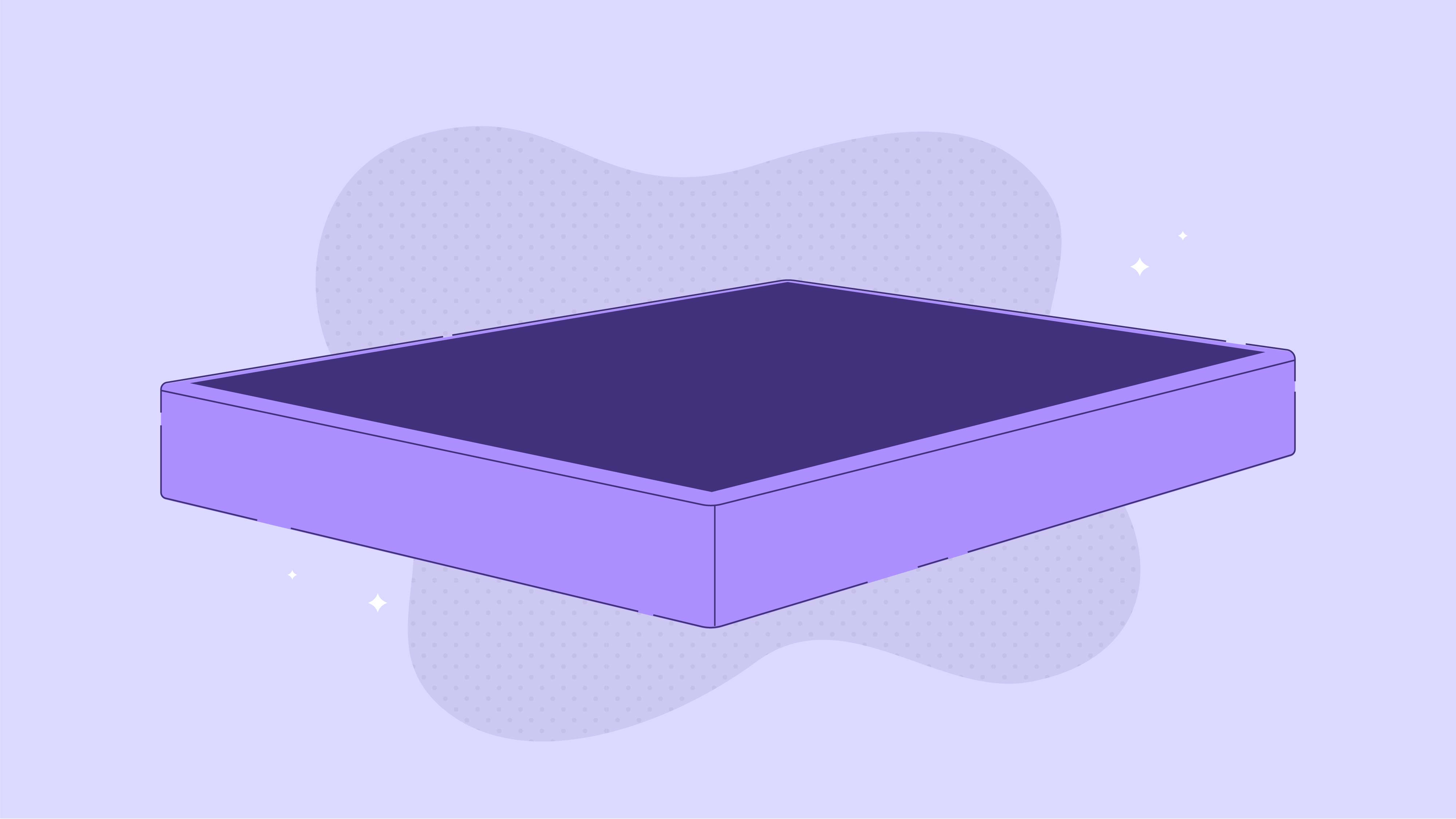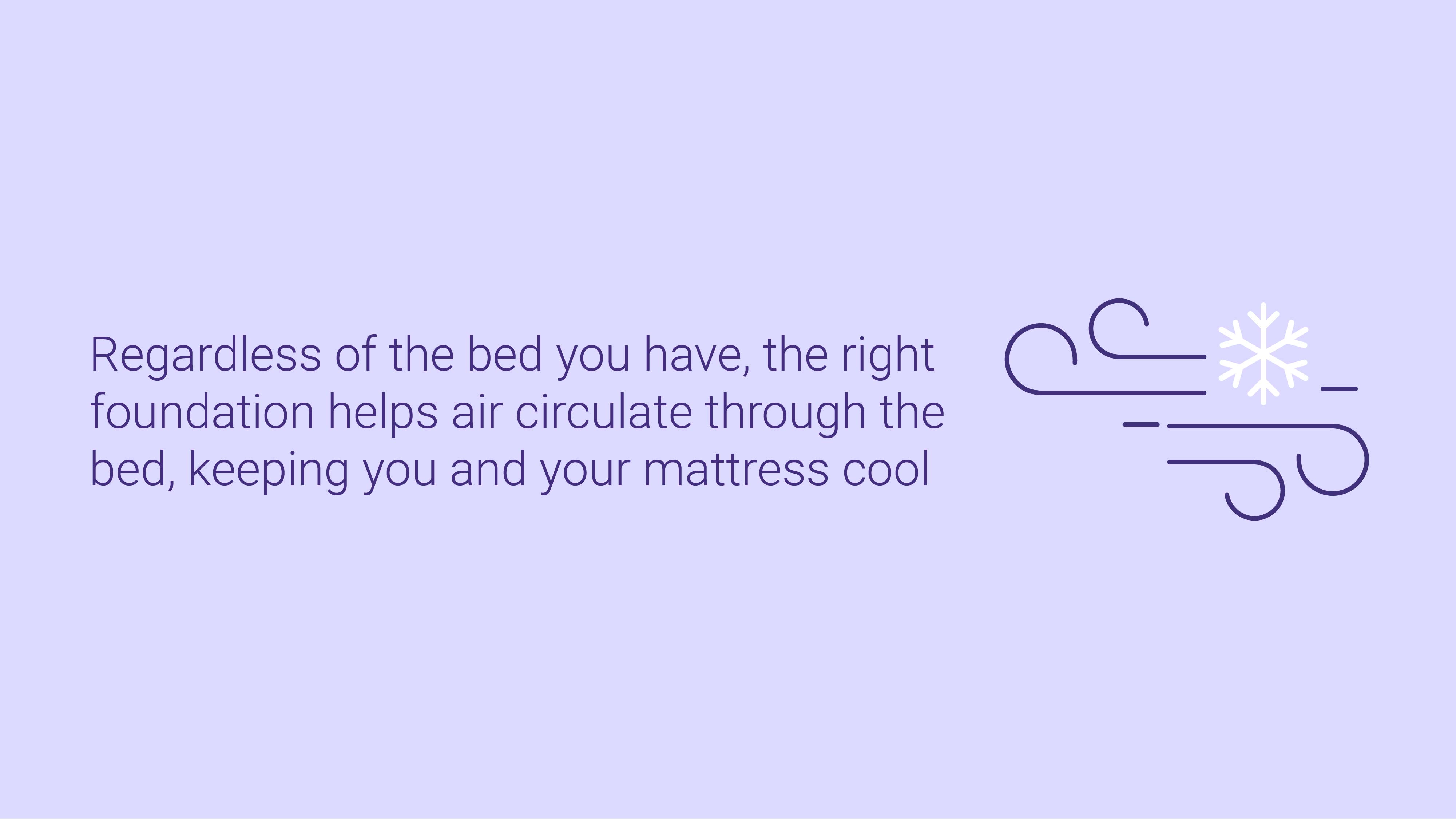
What Kind of Bed Foundation Do I Need?

- Bed foundations play a crucial role in enhancing mattress longevity, comfort, and cleanliness, steering attention away from traditional box springs towards modern alternatives.
- Mattress foundations offer benefits such as increased mattress lifespan, improved airflow, cleanliness, and preventing mattress movement.
- Diverse mattress foundations like box springs, bed slats, solid foundations, bunkie boards, adjustable foundations, and bed frames are compatible with various mattress types and sizes.
Many of us overlook the importance of bed foundations and are more focused on our actual mattresses. However, your foundation plays an important role in your bed’s longevity, comfort level, and cleanliness.
While we all know what box springs are, they’re not the only mattress foundations to choose from. They’re arguably the least useful and functional mattress base compared to other foundations today.
With our guide, we can help you find the right mattress foundation for your bed.
Box Springs
Originally, traditional box springs had actual springs inside of them—thus the name—but today, box springs are only wooden frame foundations with a fabric casing.
Box springs are only usable with innerspring mattresses. Innerspring mattresses need a box spring to support the sleeper and absorb pressure. Memory foam beds should not be placed on a box spring and using them may even void some warranties.
Since innerspring mattresses have become less popular, so have box springs. Box springs aren’t decorative bed foundations, so most people use a bed frame around their box springs—which is an extra cost people likely want to avoid. Also, box springs are quick to break, sag, and squeak compared to other bed foundations.
Box Springs Work With…
- Innerspring beds
Bed Slats
Bed slats are wood planks or metal beams secured to the sides of a bed frame. They’re great for supporting your mattress, easy to install, and budget-friendly. Another benefit to bed slats is that they fit with any bed frame and size, too.
Beds frames can use either several wide slats or numerous thin slats. The slats may be individual pieces you lay down or a group of slats connected with fabric.
Either way, the slats should be no more than 2.75 inches apart. Slats spaced any farther apart leave your mattress at risk of sinking into the gaps and sagging. Bed slats should be secured to your frame, otherwise, they may slip or fall, leaving your mattress partially unsupported.
Bed Slats Work With…
- Memory foam beds
- Latex beds
- Hybrid beds
- Innerspring beds
Solid Foundations
Solid foundations—also called a mattress foundation or a platform bed frame—are modern bed foundations. In a way, they’re an updated version of a box spring, but they also support memory foam beds, latex beds, and hybrid mattresses—not just innerspring beds.
Solid foundations are wooden side panels with a center support beam, all of which is wrapped in fabric. Instead of coils, solid foundations have wood or metal slats. The foundation’s slats are covered in durable fabric at the top of the frame. Wrapping the slats in fabric prevents wear and keeps the slats from slipping out of place.
Some solid foundations are simply a box to sit on your bed frame—like a box spring—other models are standalone foundations with legs. Solid foundations with legs are a great choice because you won’t need to buy a bed frame with them, ultimately saving you money.
Solid foundations lift your bed off of the ground up to 10 inches, depending on if you get a foundation with legs or not. Legs or not, solid foundations usually have an easy assembly process, too. You’ll only need to snap all the pieces into place and twist in the legs.
Solid Foundations Work With…
- Memory foam beds
- Latex beds
- Hybrid beds
- Innerspring beds
Bunkie Boards
Bunkie boards are a flat foundation made from 1 to 3 inches of plywood, solid wood, or particleboard and wrapped in fabric.
Bunkie boards were originally designed for bunk beds that require thin foundations to prevent reducing overhead clearance for sleepers, but they’ve become a replacement for box springs. A bunkie board is a good option if you prefer a lower profile bed as it adds little to no height.
Unlike other bed foundations, bunkie boards are a single piece of wood, rather than containing several slats or individual rails. If you already have a mattress foundation, but the slats are too far apart, bunkie boards can help. You simply place the bunkie board over your current foundation to add extra height and prevent sinkage.
Bunkie Boards Work With…
- Memory foam beds
- Latex beds
- Hybrid beds
- Innerspring beds
Adjustable Foundations
Adjustable foundations—also called motorized bases or adjustable beds—are hinged bed foundations with a motor and wireless remote control. With an adjustable base, you can adjust the angle of the top and bottom of the bed to find a comfortable position for you.
While adjustable bed frames have been popular in hospitals for years, more and more people have started using adjustable bases at home for their numerous benefits.
Some of the benefits of adjustable foundations include reduced snoring and sleep apnea, minimized acid reflux and heartburn, and back and joint pain relief. Adjustable foundations can also improve blood circulation to improve conditions such as edema.
Adjustable bed frames may include high-tech features such as USB ports, massage features, customizable presets, and more.
While adjustable foundations work with most modern beds, something to keep in mind is your bed’s thickness. Beds thicker than 14 inches may not shape well with an adjustable foundation, minimizing the potential benefits.
Adjustable Foundations Work With…
- Memory foam beds
- Latex beds
- Hybrid beds
Bed Frames
Many of us confuse bed frames and mattress foundations, but they’re not the same thing. Bed frames are exclusively decorative, with only side panels, a headboard, and a footboard for your bed.
Most bed frames are only for the perimeter of your mattress and foundation. While some bed frames include center support and several slats, the center support and slats are there to carry the mattress’s foundation, not the mattress itself.
Bed Frames Work With…
- Any type of bed with a proper foundation
Bed Foundation Sizes
Bed frame and foundation sizes can vary, just like mattresses. However, in most cases, these sizes correspond to standard mattress sizes.
Twin Bed Foundation
Dimensions: 38 by 75 inches
Twin beds are the smallest standard size mattress and foundation. They’re a great option for small homes, kids’ rooms, college dorms, and vacation rentals. Twin size mattresses are also a good starter bed for toddlers and children who are upgrading from their cribs.
Twin XL Bed Foundation
Dimensions: 38 by 80 inches
Twin XL mattresses are a longer version of the twin mattress, for tall adults who need more space without taking up more room. These beds and foundations work well for apartments, studios, and college dorms. Twin beds are also compatible with bunk beds.
Full Bed Foundation
Dimensions: 54 by 75 inches
Full beds—also known as double beds—are an ideal option for teens and adults who need more space to stretch out in bed. At the same time, full beds are not very tall or wide, so they aren’t a great choice for couples or adults taller than 6 feet.
Queen Bed Foundation
Dimensions: 60 by 80 inches
Queen mattresses are the most popular bed and foundation size among adults and couples. They’re large and wide but fit in most bedrooms.
King Bed Foundation
Dimensions: 76 by 80 inches
King beds are excellent for couples who need lots of personal space. Since the beds are so large, it’s best to have a large master bedroom to accommodate them and have space for other furniture.
California King Bed Foundation
Dimensions: 72 by 84 inches
For taller couples or those with narrower bedrooms, consider California king beds and foundations. They’re the longest standard size mattress for tall adults who enjoy stretching out. With a Cal king bed, be sure to get a California king foundation, not one for a king bed.
Benefits of a Bed Foundations
Bed foundations aren’t just there for aesthetic purposes or to add height to your bed. Using the right mattress foundation can boost your mattress’s lifespan and keep your bed cool and clean.

Increases Your Mattress’s Lifespan
Considering we spend one-third of our lives in beds, it’s important to have the right foundation to support your mattress. A good foundation also prevents your mattress from sinking from frequent usage over many years.
If you were to use an incompatible foundation for your mattress, the bed could wear down rapidly.
Improves Airflow Through Your Mattress
A crucial aspect of sleeping well is staying cool—the ideal temperature for sleep is 60 to 67 degrees.
Regardless of the bed you have, the right foundation helps air circulate through the bed, keeping you and your mattress cool. When on the ground, air cannot flow through your bed, potentially causing you to overheat.
Makes Your Bed Taller
Compared to simply leaving your mattress on the ground, adding height to your bed makes it much easier to get in and out of bed.
When combining the height of your bed foundation and mattress, your bed usually ends up being around 16 to 25 inches tall. When sitting at the edge of your bed, your feet should be flat on the floor and your hips should be in line with your knees.
While your bed’s height may not seem so important, for the elderly and people with mobility problems, it’s important to have a bed easy to get in and out of safely. The ADA recommends that your bed should be 20 to 23 inches tall in total for easy access.
Keeps Your Mattress Clean
While we all want to believe our homes are spotless, floors are notoriously the dirtiest area in a home. Dirt, dead skin cells, hair, dust, dust mites, and allergens all collect on the ground, along with moisture—which leads to mold and mildew growth. Keeping your mattress on the floor increases the chance of exposure to all of these.
Placing your mattress on a foundation protects your bed from the dirt on the ground. While modern mattresses such as latex and memory foam beds are naturally resistant to dust mites and bacteria, they can still trap moisture and deteriorate.
Prevents Your Mattress From Moving
Most bed foundations feature a non-slip fabric of some kind to keep your bed in place. If you place your bed on the floor or the wrong foundation, it may shift out of place and lose support in key areas.
The size of your bed frame or foundation should be the same as your mattress size. This will keep the mattress from sliding, prevent sinking, and extend the lifespan of your mattress.
FAQs
What bed foundation is best?
Bed foundations work well for different beds and needs, so there’s no one best foundation.
Solid foundations are all-encompassing because they work well with most mattress types and don’t always require a bed frame. Adjustable foundations provide unique and customizable types of support—at a cost. Bunkie boards and bed slats are a good choice if your current foundation is unsupportive or if you prefer a low-profile bed.
If anything, box springs are less than ideal since they only suit innerspring beds, beds that have a low satisfaction rating.
How much do bed foundations cost?
The price of bed foundations depends on what you choose and their size. There’s a large range of qualities and styles as well, which also affects the prices.
Here are the price estimates for the following bed foundations:
- Box springs: $100 to $300
- Bed slats: $30 to $100
- Solid foundations: $200 to $800
- Bunkie boards: $50 to $150
- Adjustable foundations: $400 to $4000
- Bed frames: $100 to $1500
Can you use a mattress on the ground?
While yes, you can technically place your mattress on the ground if you choose. However, unless you’re using a floor mattress, we don’t recommend it.
Leaving your mattress on the floor leaves it vulnerable to dirt, dust, and any pests on the floor. It also minimizes the air circulation to your bed, causing to trap heat and moisture, potentially leading to mold and mildew build-up. For individuals with low mobility, it’s difficult and possibly painful to access a bed on the floor.
Worst of all, using your mattress on the ground voids most mattress warranties.
Do you always need to get a new foundation with a new bed?
While you may be tempted to use your old foundation with your new bed, foundations don’t last forever. The wood or metal in the foundation eventually bends or snaps, becoming less supportive with time. Your foundation may have a few years left in it when you get a new bed, but you’ll need to replace it eventually.
Does a bed foundation need a bed frame?
No, bed frames are exclusively decorative and won’t add any functional benefits to your bed foundation or mattress. Some bed foundations can be unsightly, so you may want a bed frame to hide them. However, there’s no need to buy a bed frame if you don’t want to.
Conclusion
Choosing a bed base for your high-quality mattress isn’t complicated. Consider the type of mattress you have, how tall you want your overall sleep surface to be, and how much money you want to spend. With this information, you’ll be able to narrow down your foundation options and find the right base for you and your bed.



